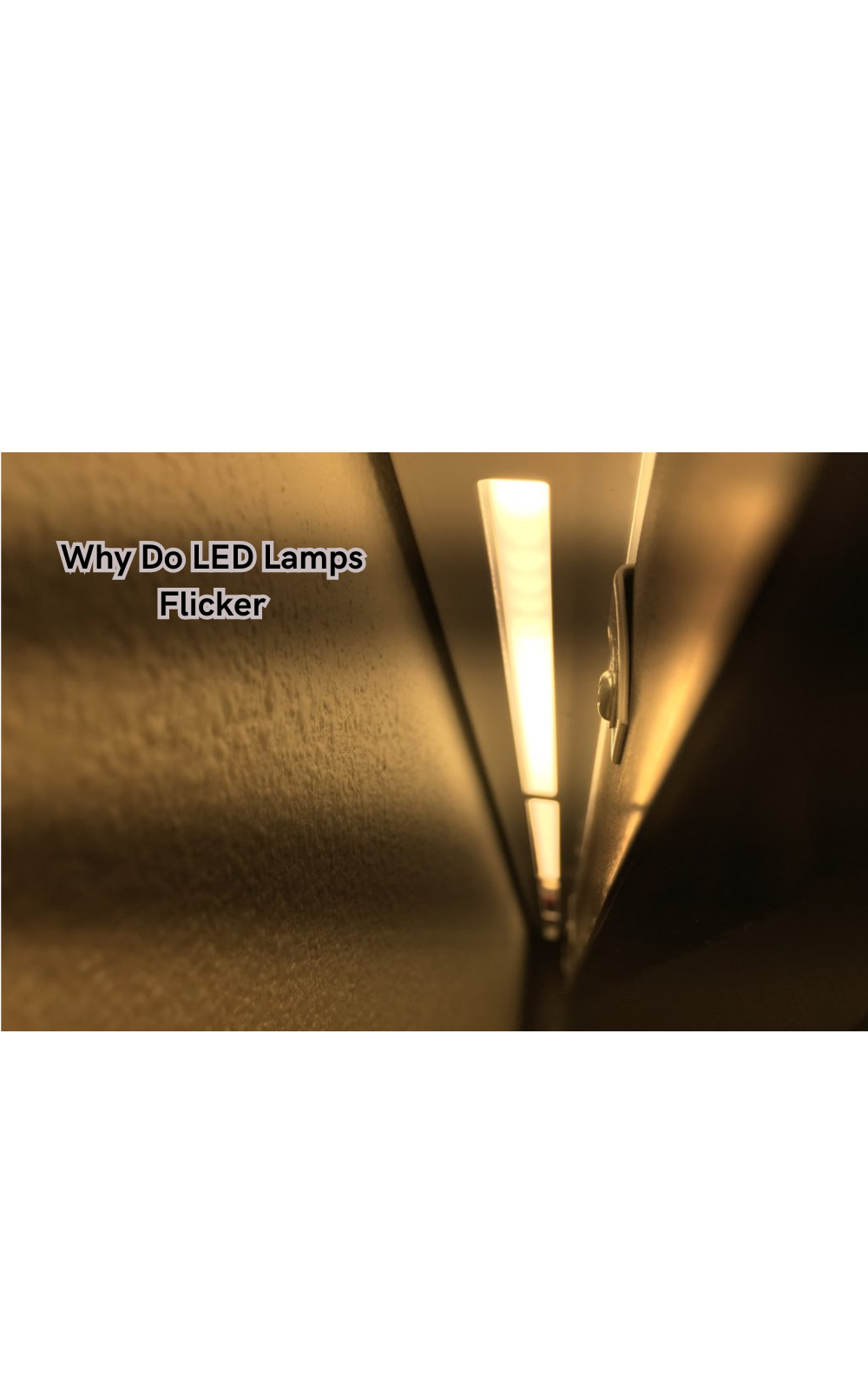Why Do LED Lamps Flicker
By delving into the root causes of LED flickering, we can implement solutions that enhance lighting performance, ensure durability, and provide a smoother illumination experience.

LED lamps flickering can be a frustrating and perplexing issue for many consumers. Understanding the reasons behind this phenomenon is crucial to address it effectively.
Flickering in LED lamps can stem from various factors, such as incompatible dimmer switches, voltage fluctuations, or even the quality of the LED driver. This inconsistency not only affects visual comfort but also raises concerns about longevity and energy efficiency.
By delving into the root causes of LED flickering, we can implement solutions that enhance lighting performance, ensure durability, and provide a smoother illumination experience.
Let's explore the intricacies of LED lamp flickering to shed light on this common yet solvable problem.
Overview LED Lamps Mechanism
To understand why LED lamps flicker, we need to first grasp the basic mechanism of how LED lighting works. Unlike traditional incandescent bulbs, LED lights do not rely on a filament to produce light. Instead, they use semiconductors that convert electrical energy into light through a process called electroluminescence.
This is achieved by the movement of electrons in the semiconductor material, which creates photons and produces light. Moreover, LED lamps also require a driver to regulate the electrical current and provide a steady flow of electricity to the diode.
Factors that Cause Why LED Lamps Flicker
Now that we have a basic understanding of how LED lamps work let's explore the factors that contribute to flickering.
Incompatible Dimmer Switches
Dimmer switches are designed to control the light output of lamps, including LEDs. However, not all dimmers are compatible with LED light bulbs. Traditional incandescent dimmers use a different type of technology than LED lights and can cause flickering when used together.
If you experience flickering in your LED lamps when using a dimmer switch, it may be due to an incompatible dimmer. In such cases, switching to a dimmer specifically designed for LEDs can solve the issue.
Voltage Fluctuations
LED lights are sensitive to voltage fluctuations, and when there is a fluctuation in the power supply, it can cause flickering. This is because LEDs require a specific voltage to operate, and any changes can disrupt the flow of electricity and lead to flickering.
Ripple effects from electronic devices, power outages, or faulty wiring can all contribute to voltage fluctuations. LED lights flicker more noticeably in areas with unstable power supply. A LED light bulb with a built-in voltage stabilizing feature can help alleviate this issue.
Quality of LED Driver
The driver is an essential component in LED lamps as it regulates the electrical current and ensures a steady output of light. If the driver is of poor quality or not compatible with the LED bulb, it can cause flickering. This is why it's crucial to use high-quality drivers that are specifically designed for LED lights.
Loose Connections
Loose connections in the wiring can also contribute to LED flickering. This is especially common in older homes or buildings with outdated electrical systems.
Loose connections can cause interruptions in the flow of electricity, leading to fluctuations and ultimately resulting in flickering lights. It's important to have a licensed electrician inspect and update any faulty wiring to avoid this issue.
Problematic Bulbs
In some cases, the LED bulb itself may be the cause of flickering. This can happen if the bulb is defective or has reached its lifespan.
If you notice flickering in a new LED bulb, it's best to replace it with a high-quality one from a reputable brand. Understand compatibility: if you connect LED light bulbs and incandescent bulbs to the same circuit, LED light bulbs might flicker.
Installing Non-Dimmable LED Bulbs in LED Dimmers
Using a non-dimmable LED bulb in an LED dimmer can also cause flickering.
This is because non-dimmable bulbs are not designed to handle the voltage adjustments made by dimmers, leading to inconsistencies in light output and flickering. Always make sure to check the packaging and purchase dimmable LED bulbs for use with dimmer switches.
The majority of people have seen flickering light bulbs at some point in their lives. With the widespread adoption of LED lighting, it's important to understand why LED lamps flicker and how to address this issue effectively.
Solutions to Address LED Lamp Flickering
Now that we know the root causes of LED lamp flickering, let's look at some solutions to address this issue:
- Use dimmers specifically designed for LED lights
- Ensure a stable power supply and address any voltage fluctuations
- Invest in high-quality LED drivers that are compatible with the bulb
- Check and tighten any loose connections in the wiring
- Purchase dimmable LED bulbs for use with dimmer switches
By implementing these solutions, we can minimize or eliminate LED lamp flickering, ensuring a consistent and comfortable lighting experience. Apart from your light fixtures, check the electrical panel and the wiring to make sure everything is up to date to avoid flickering issues. LED light fixture technology is constantly evolving, and newer models have features to address flickering.
Health Problems Associated with LED Flicker
Here are some potential health problems associated with LED flicker:
Headaches and Migraines
LED flicker can cause headaches and migraines, especially for those who are sensitive to light. The inconsistent light output and rapid changes in brightness can trigger these conditions. Flickering LED lights may also cause eye strain and fatigue.
Eye Strain
Prolonged exposure to LED flicker can also cause eye strain, leading to discomfort and fatigue. This is because the constant fluctuations in light output can strain the eyes and make it difficult to focus.
Disrupted Sleep Patterns
Some studies suggest that LED flicker can disrupt our circadian rhythm and sleep patterns. This is because the blue light emitted from LED lights can suppress the production of melatonin, a hormone that helps regulate sleep.
Fatigue and Cognitive Impairment
Flickering lights can also cause fatigue and cognitive impairment in individuals.
This is because the constant changes in light output can impact our brain's ability to process information efficiently, leading to difficulty concentrating and reduced productivity. Epilepsy and other seizure disorders may also be triggered by LED flicker in some individuals.
It's essential to address LED flicker not only for improved lighting experience but also for our overall health and well-being. Do proper light fixtures of blinking LED lights and ensure a stable power supply to minimize the risk of health problems associated with flickering.
FAQs
Do LED bulbs flicker before they burn out?
It is possible for LED bulbs to flicker before ultimately burning out. This can be due to a faulty bulb, outdated driver, or other underlying issues.
Do cheap LED bulbs flicker?
Cheaper LED bulbs may be more prone to flickering due to lower quality components, but this is not always the case. It's important to research and purchase high-quality LED bulbs from reputable brands.
Can LED flicker cause seizures?
LED flicker can potentially trigger seizures in individuals with epilepsy or other seizure disorders. It's best to avoid prolonged exposure to flickering lights for their safety.
Can LED flicker cause fire?
LED flicker itself does not pose a risk of causing a fire, but it may indicate underlying electrical issues that could lead to a potential fire hazard. It's important to address flickering lights and seek professional help if needed.
Conclusion
In conclusion, the phenomenon of LED lamps flickering is a multifaceted issue that demands attention for optimal lighting performance.
As we delve deeper into the intricacies of LED lamp flickering, we empower ourselves to make informed decisions, mitigate disruptions, and create a more stable and reliable lighting environment for both residential and commercial settings.
